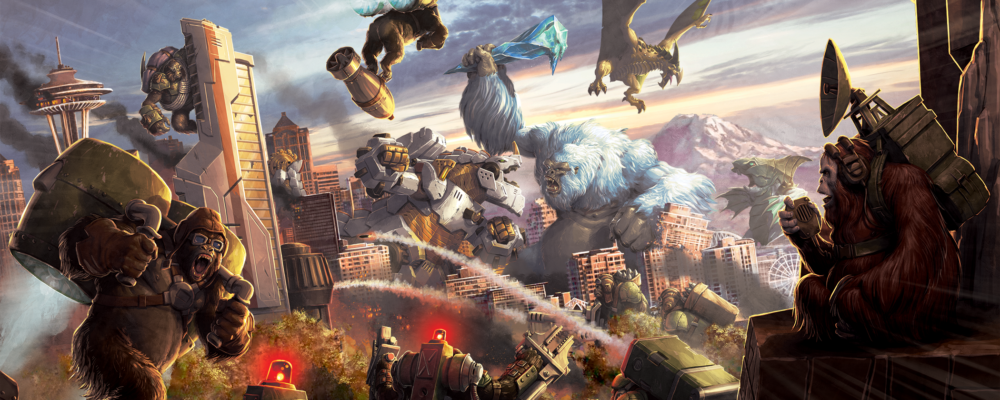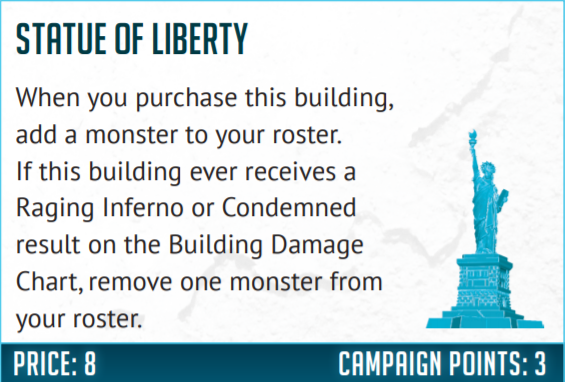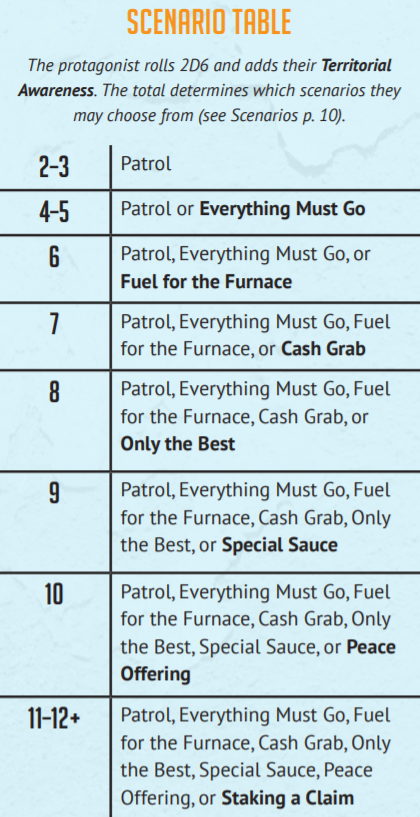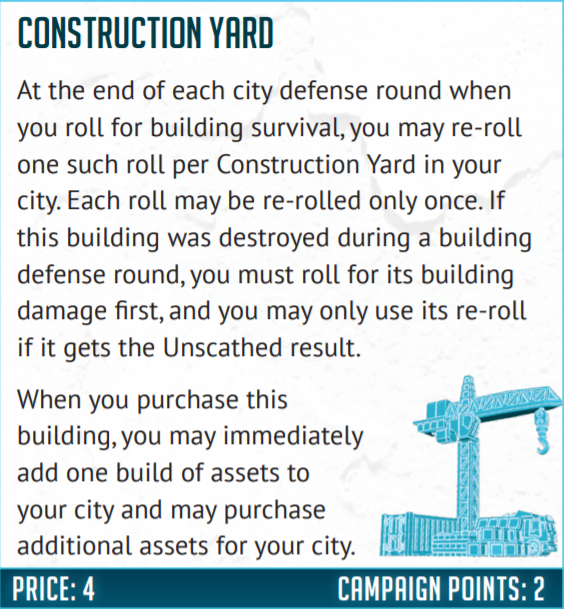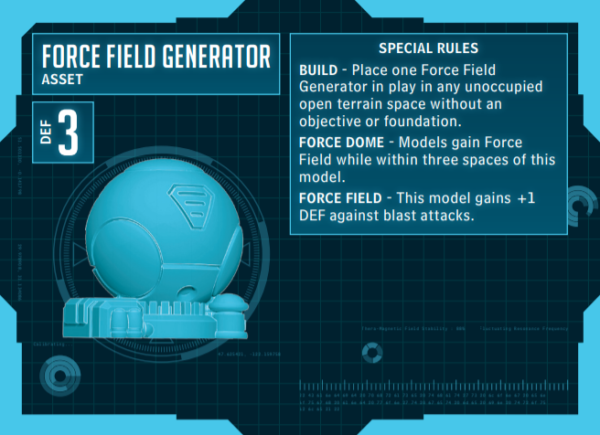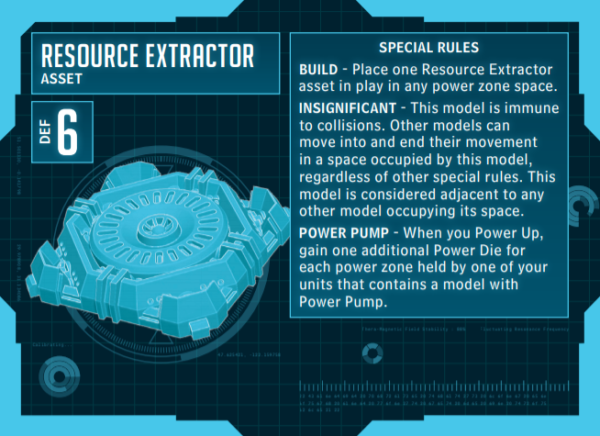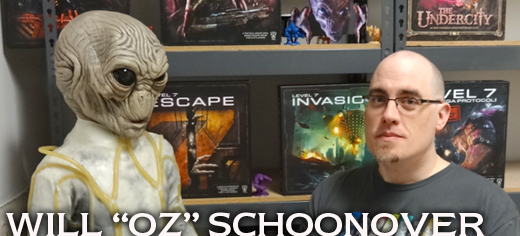As promised in my last Insider, this time we’re talking Smashville.
Campaigns are a great way to add depth to almost any gaming experience, and slowly building up the power of your army as a campaign progresses has been a mainstay of miniatures gaming for decades. When we sat down to determine how a campaign in Monsterpocalypse could work, there were some big questions to answer.
The first question was, What gets better over the course of the campaign? We had a lot of options, but balance made most of them problematic. Since the models in Monsterpocalypse start out dangerous, allowing them to increase stats or learn new abilities would make them overpowered quickly. Taking a cue from Real Time Strategy games, we decided to limit improvements to your base.
When you start a Smashville campaign, you first pick an Agenda and add up to four monsters from it to your roster. You also start with a limited roster of units from your Faction. After you’ve selected which monster and units you’ll start with, you pick a map to call home. That map begins full of Apartment buildings, and you can spend the megabucks you earn during games to upgrade the buildings. Having a building in your city adds its bonus to your rules sheet, and each building offers a unique bonus.
After that setup is done, you jump into the first block of the game. Blocks group rounds together. During most rounds, you’ll face two opponents in standard scenarios, once as the protagonist and once as the antagonist. At the end of each block, however, is a special round in which you defend your city from an opponent. During these Base Defense rounds, you’ll build the map following the notes you’ve made on a map sheet for which buildings are on the foundations, and you’ll try to drive off your opponent before they wreck too much of your carefully constructed city.
Base Defense rounds feel very different from a “normal” game of Monsterpocalypse, but so do the standard rounds of a Smashville campaign. As the protagonist, you’ll roll on a chart to determine which scenarios you can choose from.
Each of these scenarios incorporates a twist on the standard Monsterpocalypse rules, and many have alternate victory conditions. For example, in scenario three, Fuel for the Furnace, you are trying to conquer a region with abundant resources so you can more easily maintain a large unit roster. That narrative concept translates into a few different things for this scenario. First, when you power up, you gain an additional Power Die for each unit on a Power Zone to represent that this area is rich in resources. Victory points are earned for the scenario by destroying your opponent’s units that are on Power Zones and for each of your units on a Power Zone when the game ends. Like a normal game, this scenario ends when only one player has monsters still in play, but the winner is the player who has the most victory points instead of who destroyed all of the enemy monsters. The winner of Fuel for the Furnace adds two more slots to their unit roster, and the loser adds one. These changes to the core gameplay make playing Smashville scenarios feel quite different and make them a fun way to shake up your routine even if you aren’t playing in a campaign.
After one of these scenarios is complete, you gain some megabucks and the rewards listed, like the roster slots above, and you can spend any megabucks you earned right away.
There are a lot of interesting new rules in this expansion, but there are also quite a few new models in the box.
One of the other questions we asked ourselves about this campaign when we were putting together the initial plan was, How would it make playing Monsterpocalypse different? I’ve talked about how gameplay changes for the campaign, but I also wanted to do something completely new for all Monsterpocalypse players, not just those who would be getting together to play campaigns.
As the theme of base construction developed, it became clear that the coolest thing we could add to the game would be a new type of model. Still in that RTS mind frame, I started looking at all the little things that would make sense in city defense. Turrets and walls were first on the list, but we ended up with seven new things in the end. These Assets act a little like buildings and a little like units. Their rules are in the Smashville box, and they’ll be added to the core rules PDF in the next update.
When you build a city for a Smashville Base Defense round, you can position helpful Defense Turrets and Resource Extractors that you’ve bought on the map. When playing any other kind of game, the Construction Yard unlocks these assets. These models allow for new options that will change your approach to the game, from the humble Deck Plate’s ability to make almost any space open terrain to the Security Bunker, which makes securing buildings much easier.
The Smashville box comes with a Construction Yard building and one of each of the asset sets to get you started and for use in the Everything Must Go scenario, but in the near future, all of these models will be released separately.
Smashville is the biggest thing to come to Monsterpocalypse since the launch two years ago, and when it is safe for everyone to start getting together again, it will provide for hours of new experiences and fun for all players. Good news, it’s available today on shelves or online!
And here are downloadable versions of all the forms you’ll need for tracking your city and roster::
- http://monsterpocalypse.com/wp-content/uploads/2020/05/MonPoc-Smashville-Rules_CityTracker.pdf
- http://monsterpocalypse.com/wp-content/uploads/2020/05/MonPoc-Smashville-Rules_DestructionJunction.pdf
- http://monsterpocalypse.com/wp-content/uploads/2020/05/MonPoc-Smashville-Rules_IsleAnnihilation.pdf
- http://monsterpocalypse.com/wp-content/uploads/2020/05/MonPoc-Smashville-Rules_ObliterationBlvd.pdf
- http://monsterpocalypse.com/wp-content/uploads/2020/05/MonPoc-Smashville-Rules_RosterSheet.pdf
- http://monsterpocalypse.com/wp-content/uploads/2020/05/MonPoc-Smashville-Rules_CalamityPark.pdf
- http://monsterpocalypse.com/wp-content/uploads/2020/05/MonPoc-Smashville-Rules_CarnageCorners.pdf

